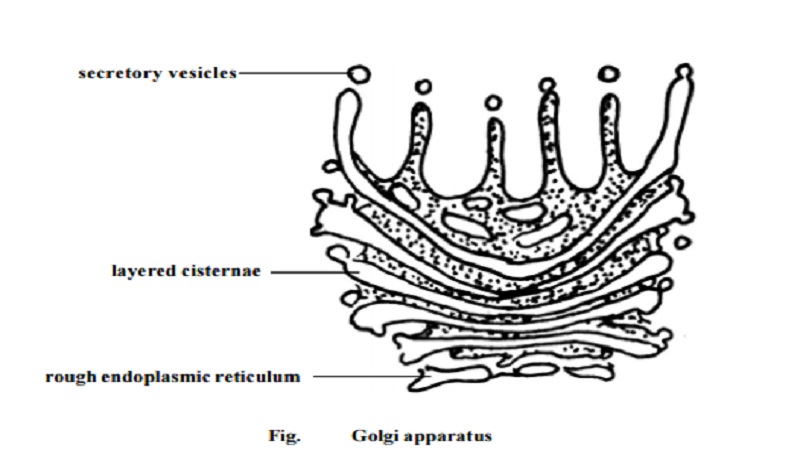Chapter: BIOLOGY (ZOOLOGY) Standard XI first year 11th text book Assignment topics question and answer Explanation Definition
Golgi apparatus

Golgi apparatus
The Golgi apparatus was discoverd by an Italian neurologist, Camillo Golgi in 1873.
The Golgi apparatus occurs in almost all animal cells except red blood cells. Animal cells usually have a single Golgi apparatus. Some cells have more of Golgi apparatus.
In most of the ectodermal and endodermal cells it occurs in between the nucleus and the periphery. In nerve cells it occupies a circum-nuclear position.
The simplest unit of the Golgi apparatus is the cisterna. A cisterna is about 1 Am in diameter. It has a membrane bound space. This space accumu-lates secretions. Numerous such cisternae are associated with each other and appear in a lamellar arrangement. In the lamellar arrangement the space between each cisterna is 20-30 nm. A group of these cisternae is called the dictyosome. A group of dictyosomes constitute the Golgi apparatus.
Typically a Golgi apparatus appears as a complex arrangement of in-terconnecting tubules, vesicles and cisternae.
The Golgi apparatus is the site of synthesis of biochemicals. They also collect proteins and lipids made in the ER and add additional substances.
Related Topics